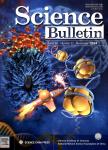Fossil seeds of Euryale(Nymphaeaceae) indicate a lake or swamp environment in the late Miocene Zhaotong Basin of southwestern China
Fossil seeds of Euryale(Nymphaeaceae) indicate a lake or swamp environment in the late Miocene Zhaotong Basin of southwestern China作者机构:Key Laboratory for Plant Biodiversity and Biogeography of East Asia Kunming Institute of Botany Chinese Academy of Sciences Yunnan Institute of Cultural Relics and Archaeology and Research Center for Southeast Asian Archeology Key Laboratory of Tropical Forest Ecology Xishuangbanna Tropical Botanical Garden Chinese Academy of Sciences State Key Laboratory of Lithospheric Evolution Institute of Geology and Geophysics Chinese Academy of Sciences Zhaotong Institute of Cultural Relics Zhaoyang Museum
出 版 物:《Science Bulletin》 (科学通报(英文版))
年 卷 期:2015年第60卷第20期
页 面:1768-1777页
核心收录:
学科分类:070903[理学-古生物学与地层学(含:古人类学)] 0709[理学-地质学] 07[理学]
基 金:supported by the National Natural Science Foundation of China(31300187,31300188) the Natural Science Foundation of Yunnan Province(2010CC010)
主 题:Euryale Nymphaeaceae Aquatic Late Miocene Zhaotong Basin Southwestern China
摘 要:Euryale (Nymphaeaceae) is a monotypic genus distributed in eastern Asia, but fossils in its native distribu- tion are sparse as compared to Europe where the genus has disappeared. Here, we describe a new fossil species, Euryale yunnanensis sp. nov., from the late Miocene Zhaotong Basin in southwestern China on the basis of seed remains. Char- acteristics including an ellipsoidal to almost spherical shape, a smooth surface, a germination cap that covers the micro- pyle, the separation of the hilum and germination cap (mi- cropyle), elliptic testa surface cells with undulate margins and thickened cell walls collectively indicate a close affinity with the genus Euryale in Nymphaeaceae. Comparisons of seed morphology and anatomy demonstrate that the newly described fossil species differs from modem and other fossil species of Euryale and thus verify the assignment to a new fossil species. As the modem Euryale is an aquatic plant, preferably living in swamps and lakes with shallow and stable water, we hypothesize that a lake and/or swamp environment with shallow water was present near Shui- tangba in the Zhaotong Basin, where the Shuitangba homi- noid lived during the late Miocene. This inference is generally consistent with paleoenvironmental data extracted from avian, fish, frog, turtle and crocodile fossils, as well as from aquatic pollen. The fossil history suggests a compara- tively recent (Miocene) emergence of Euryale, which is roughly in agreement with the divergence time inferred from the molecular information.



